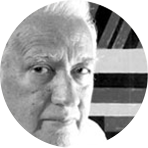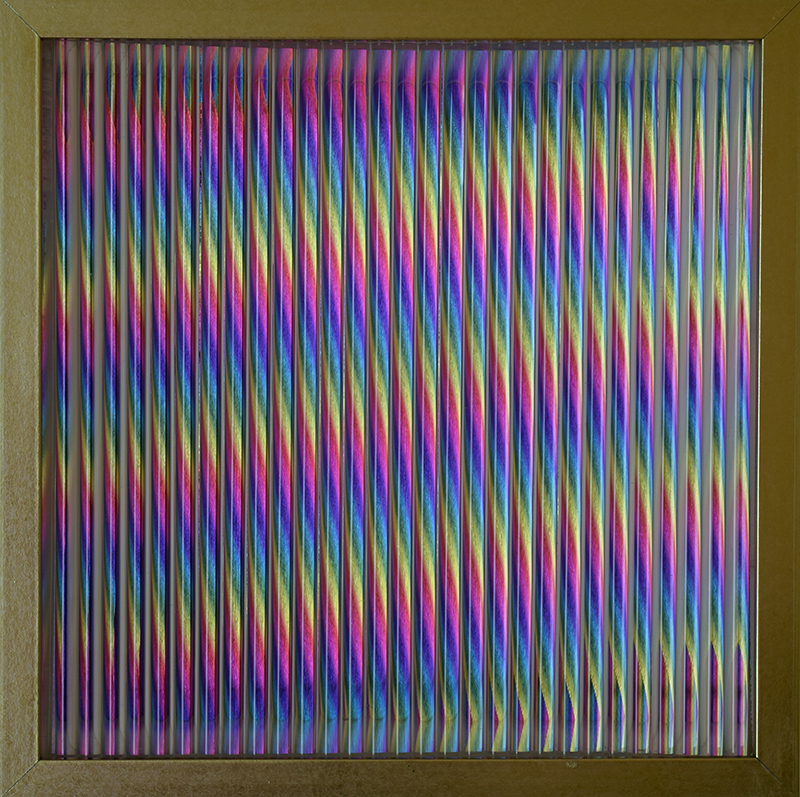Omar Rafael Carreño was born in Porlamar, Venezuela in 1927. He studied not only in Caracas, but also in Europe (Paris, Rome, Venice), where he resided for many years. Today he works both in Caracas and in Paris. By 1950 he had made many abstract paintings. His Tres Tiempos, a geometric work from1950 is now in the Patricia Phelps de Cisneros collection in Caracas. This predates Soto’s abstract work.
In 1951 Carreño began making geometric works that were transformable and manipulable, which he called “polípticos.” In May 1952 he had a one man show at the Galeria Arnaud in Paris entitled “Peintures reliefs” in which he exhibited these irregular and transformable works. One of these, “Poliptico 4” was reproduced in the memorial album of the 6th Salon de Réalités Nouvelles, published in 1952. It was also a stellar attraction for an individual exposition of 96 of Carreño’s works in 1983 at the Museo Español de Arte Conemporáneo in Madrid (now the Reina Sofia), and was used as the poster for the show. Many of these works are now in the collection of the Museo de Bellas Artes in Caracas.
Early in 1952 Luis Guevara Moreno invited Carreño to participate in a MADI show at the Galeria Suzanne Michel in Paris. Thus Carreño’s irregular transformable works were exhibited a full year and a half before the first Yaacov Agam exhibit in Paris in the fall of 1953. Carreño, rather than Agam, is the initiator of transformable works in the post war era.
Carreño initiated works of transformable light in 1967. Such a work is on this page, and may be seen in the Museum of Geometric and MADI Art. He continued having individual expositions in France, Spain, Venezuela and Italy, and participated in the Venice Biennial of 1972. He has written several “Manifiesto Expansionistas” about transformable art and other articles about the relation between art and science.




